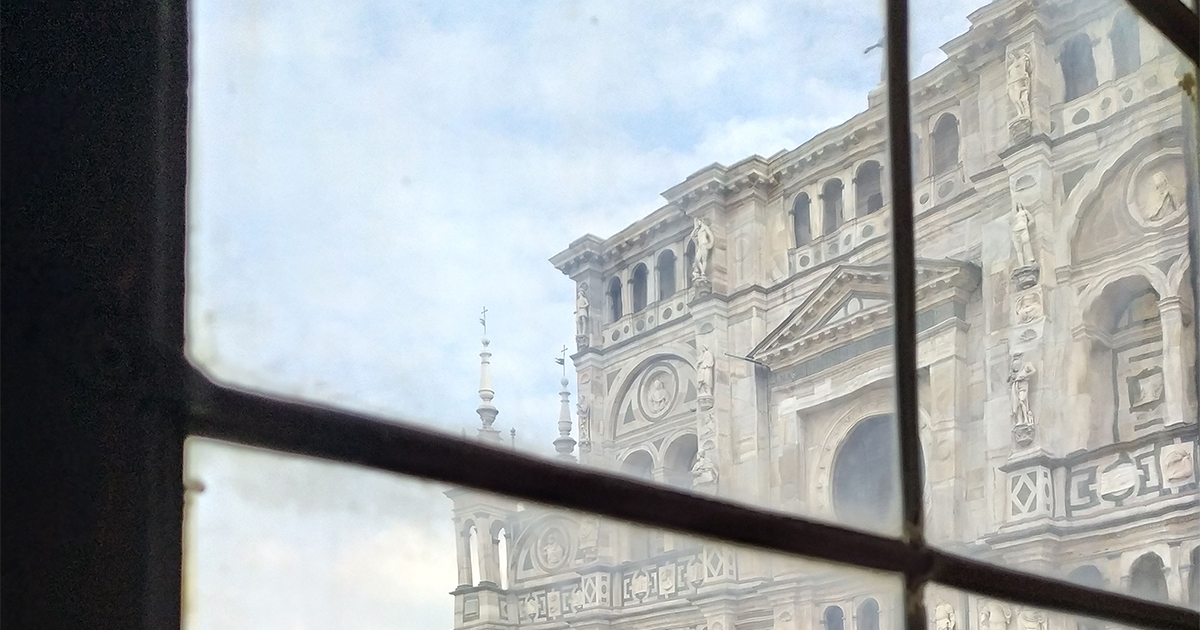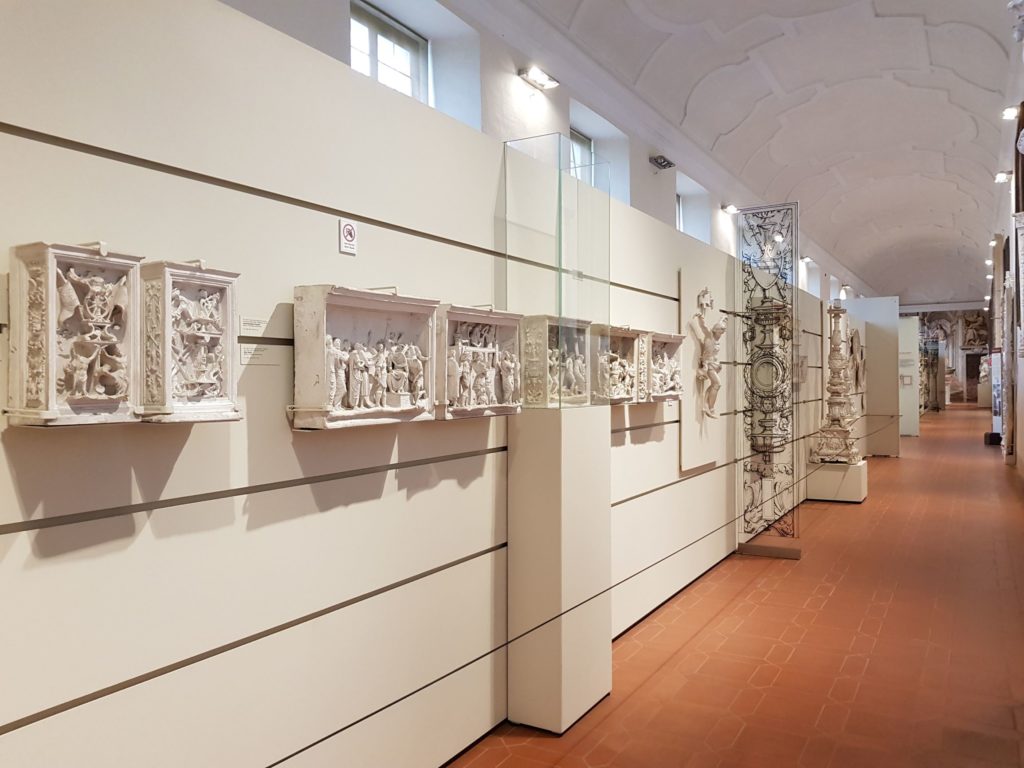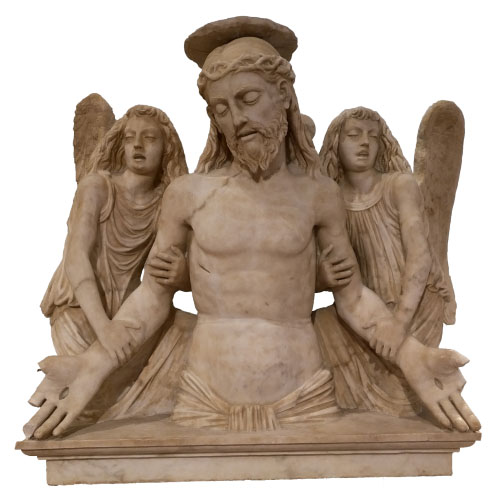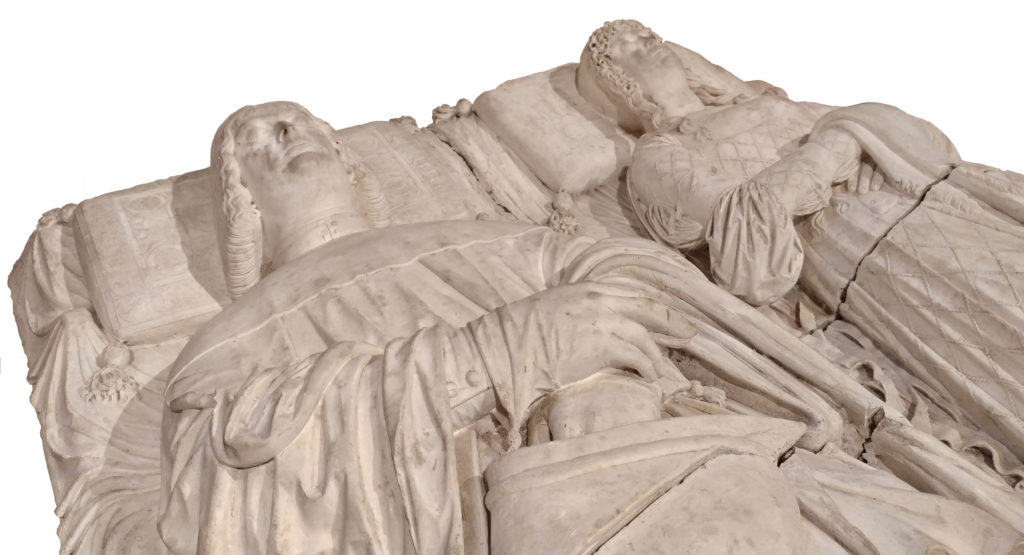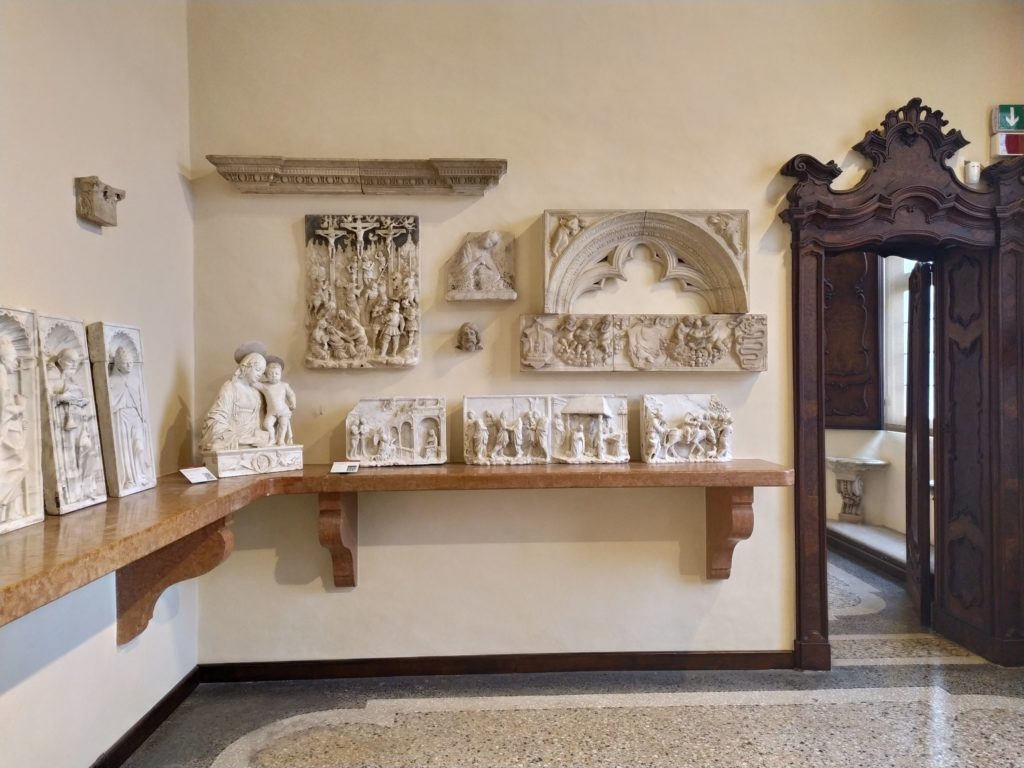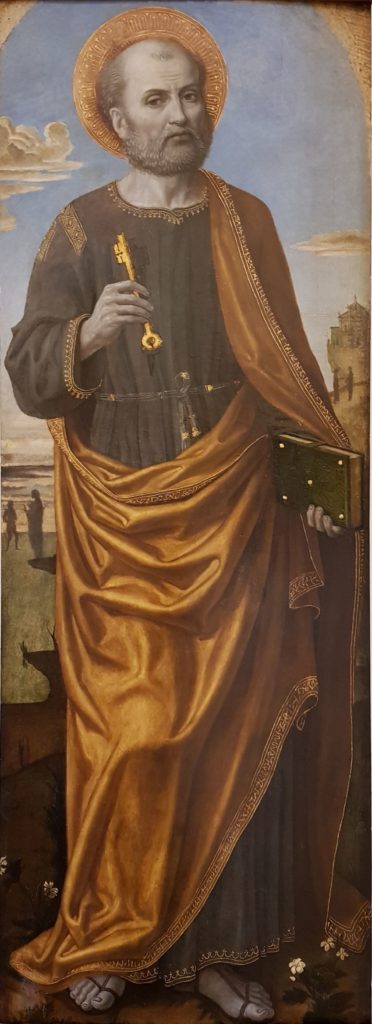More than a museum, the story of a monument.
Strolling through the beautiful cloisters and courtyard of the Certosa di Pavia you can still feel the slow passing of monks’ life, who have inhabited those spaces for centuries. You can also pass by one of the countless wooden doors which conceal to the visitor’s eyes the Certosa’s secrets and behind one of those doors is guarded an hidden treasure: the Museum of the Certosa di Pavia. Here, through paintings, sculptures and plaster casts, is narrated the secular history of the monument and the people who tied their lives to it.
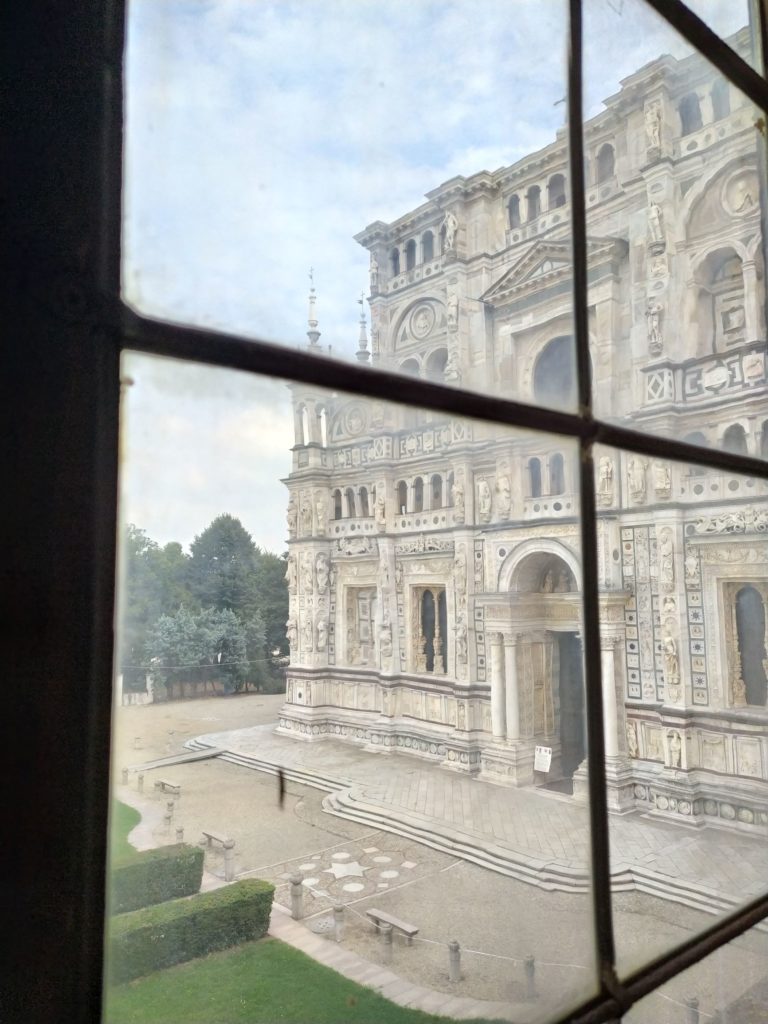
The construction of the Certosa began in 1396 with Gian Galeazzo Visconti, Duke of Milan, in order to fulfil the vow of his wife Caterina to build a monastery if she surived her sons’ birth. This complex rises in the bucolic countryside around Pavia and it was supposed to be the witness of power and prestige of the Viscontis. In fact, the Duke wanted “to have a palace to live in, a garden for his leisure time and a chapel for his devotions.” Consacrated in 1497 and completed in 1562, the church and the whole complex of the Certosa of Pavia passed to the Italian State in 1866 as a result of the suppression of the religious orders.The construction of the Certosa began in 1396 with Gian Galeazzo Visconti, Duke of Milan, in order to fulfil the vow of his wife Caterina to build a monastery if she surived her sons’ birth. This complex rises in the bucolic countryside around Pavia and it was supposed to be the witness of power and prestige of the Viscontis. In fact, the Duke wanted “to have a palace to live in, a garden for his leisure time and a chapel for his devotions.” Consacrated in 1497 and completed in 1562, the church and the whole complex of the Certosa of Pavia passed to the Italian State in 1866 as a result of the suppression of the religious orders.
From the beginning of the XIX century there was a renewed interest for the monument and during this period plaster casts of the church and cloister’s decorations begin to be produced. In the minds of academincs grown also the idea of finding a place in which could be exposed the rich heritage accumulated over the centuries, this heritage is fundamental for the understanding of the monument of the Certosa.
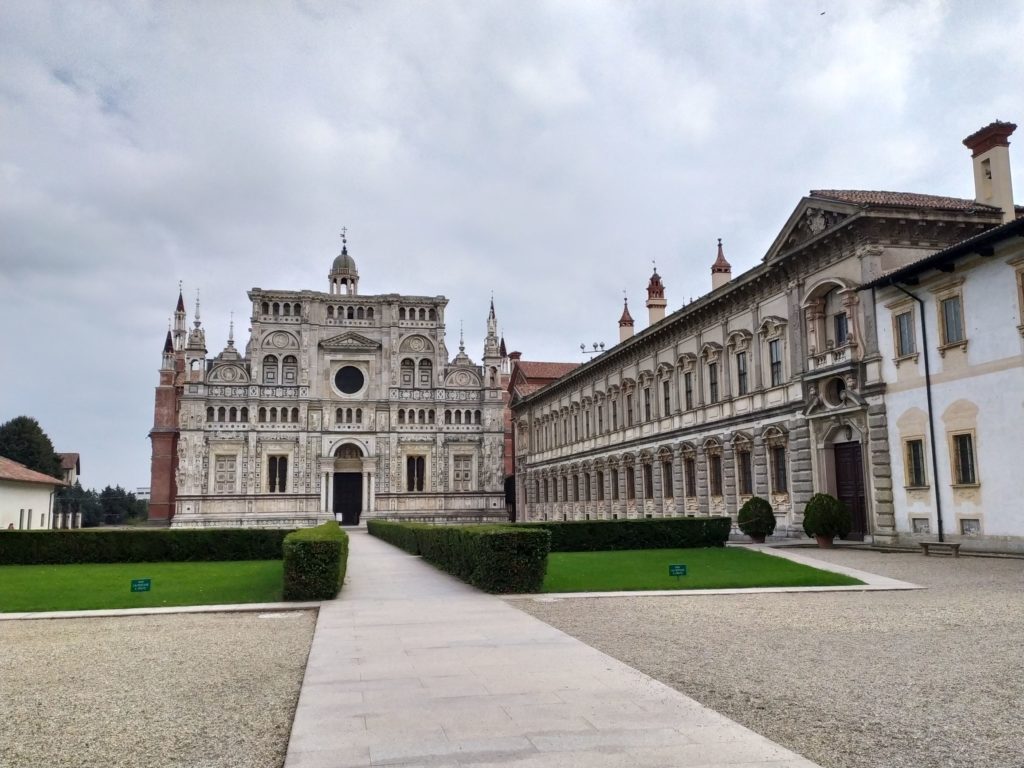
The Museum
The museum is divided into two floors, as we still see it today. On the ground floor, there is the gipsoteca (plaster cast gallery) where plaster casts and sculptures show to the visitor the decorative richness of the Certosa. While, on the first floor the path winds through some richly decorated rooms that tell the story of the monument and its artists thanks to more than 300 works. Over the centuries, important Italian artists were hosted at the Certosa, among the masters Bartolomeo Montagna who painted his “Madonna with Child Enthroned” and Bergognone who left to the church his “St. Peter”.
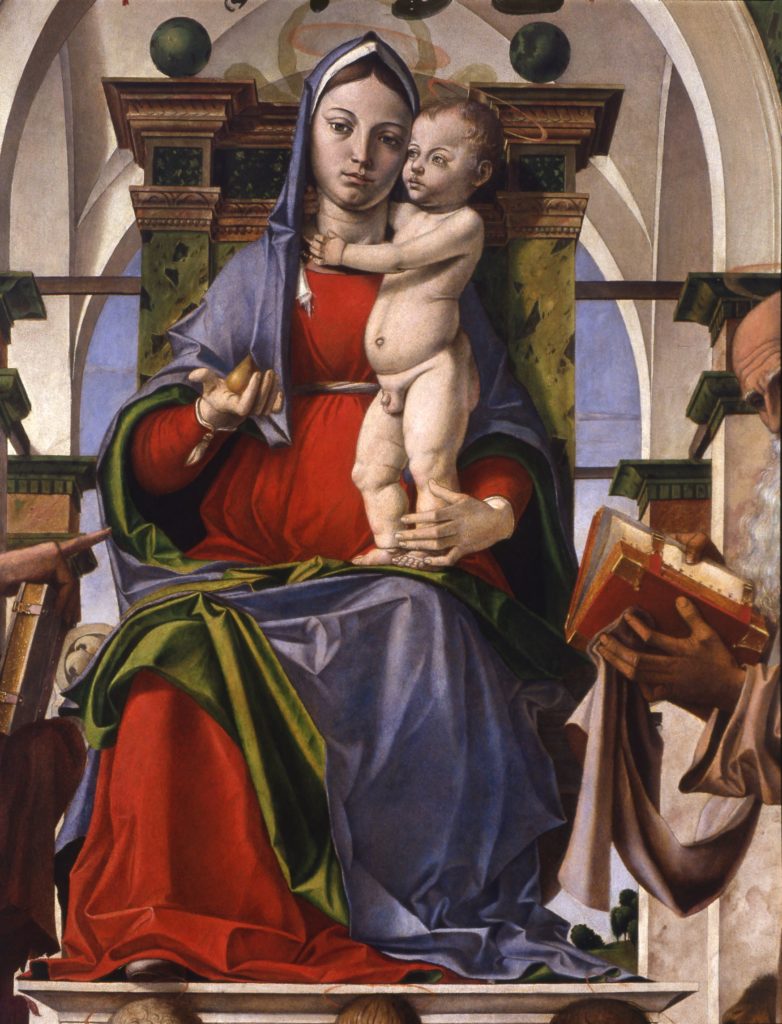
However, this museum cannot be told only through its works but above all through its long and troubled history, which allows us to admire these treasures today. Already in 1883 a first proposal was made for the constitution of a museum that would be complementary to the visit of the Certosa. This was consistent with the international trends that led to the constitution of museums annexed to the restored monuments to tell their story. Thanks to the work of the scholar Carlo Magenta and the architect Luca Beltrami, who was already collaborating in the restoration of the Certosa, a first group of works was selected to be the core of the museum starting from 1892. So in 1897 work began on the restoration of the Palazzo Ducale.
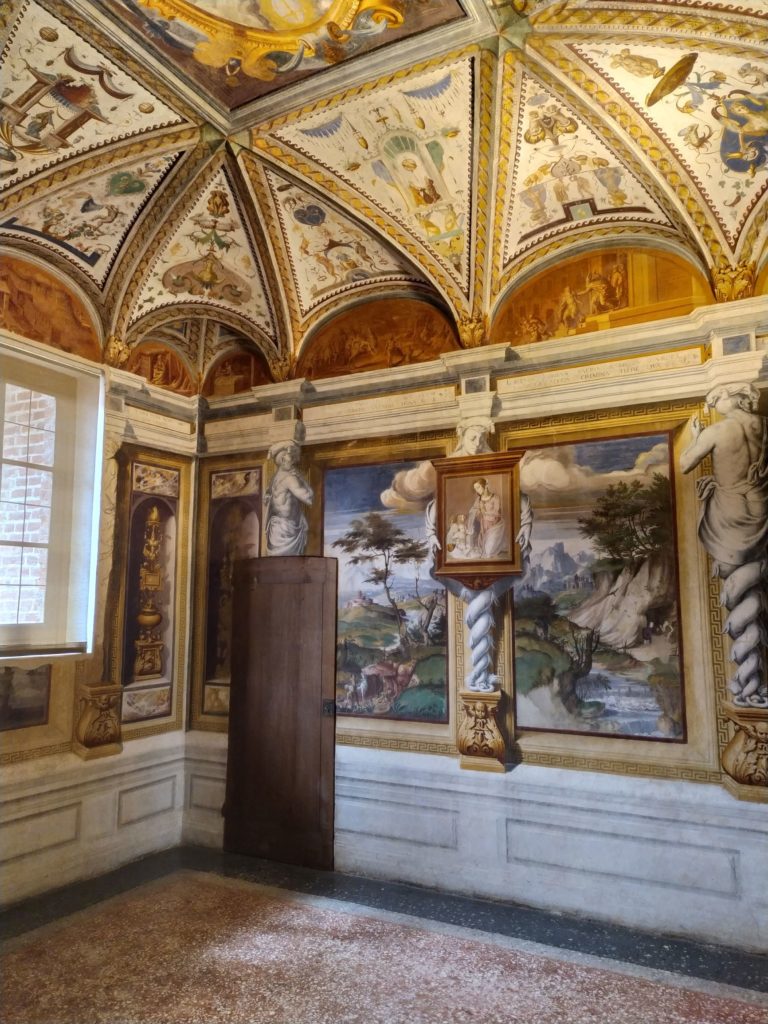
Finally, in 1911 the museum was opened to the public who could now wander through the halls, marvel at the completely frescoed Studiolo – the private room of the Duke – or get lost among the facade’s meticulous decorations of the Certosa, reproduced thanks to the plaster casts. However, by the following year the museum was already closed and became accessible by appointment only. Sadly for decades visitors who came to the Certosa to admire its splendor and stroll under the colonnaded porticoes passed by that door, looklike many others, without imagining the hidden treasures.
Starting from 2001 the Italian Ministry of Cultural Heritage and Activities finally had the opportunity to project a definitive reopening of the museum. An important campaign of restoration works began both on the spaces of the museum itself – the exhibition layout of the ground floor was redesigned and the entire visit path was adapted to the current standards – as well as the art works, restored to be exhibited again. In 2008, at the end of the works, the door was opened again and visitors returned to get lost in the history and beauty that its rich collection tells. The museum of the Certosa di Pavia was born following the massive dispersions of the late eighteenth-century artistic and liturgical heritage, as a documentary commentary about the monument and its restoration, we know that the facade of the church was under a restoration project just as the museum was being set up, this makes it an even more fundamental part of the visit to the complex of the Certosa di Pavia.
The Gipsoteca, not simple copies
A gipsoteca is a collection of plaster casts taken from sculptures and arthictectonic elements. Over the centuries these casts have performed different functions: they have been used to circulate the most famous sculptures in the world and make them visible to as many people as possible, in the Renaissance, but also as study models in academies, especially between the eighteenth and nineteenth centuries.
The gipsoteca of the Certosa di Pavia includes over 200 casts made over several decades. In fact, since 1785 the presence of plaster casts is documented in its inventory. Strongly desired by the architect Beltrami, whose idea was to give Lombardy, until then lacking, a high-quality gipsoteca which was projected on the model of the Musée de Sculpture Comparée de Paris, commissioned by Viollet Le-Duc, with whom Beltrami had previously collaborated. Beltrami wished for a didactic use of the plaster casts but also his will was to underline their value as integral parts of the history of the monumental complex as well as a conservative testimony of the restoration works of the Certosa. The gipsoteca was – and still is – entrusted with different functions, thinking at the same time to:
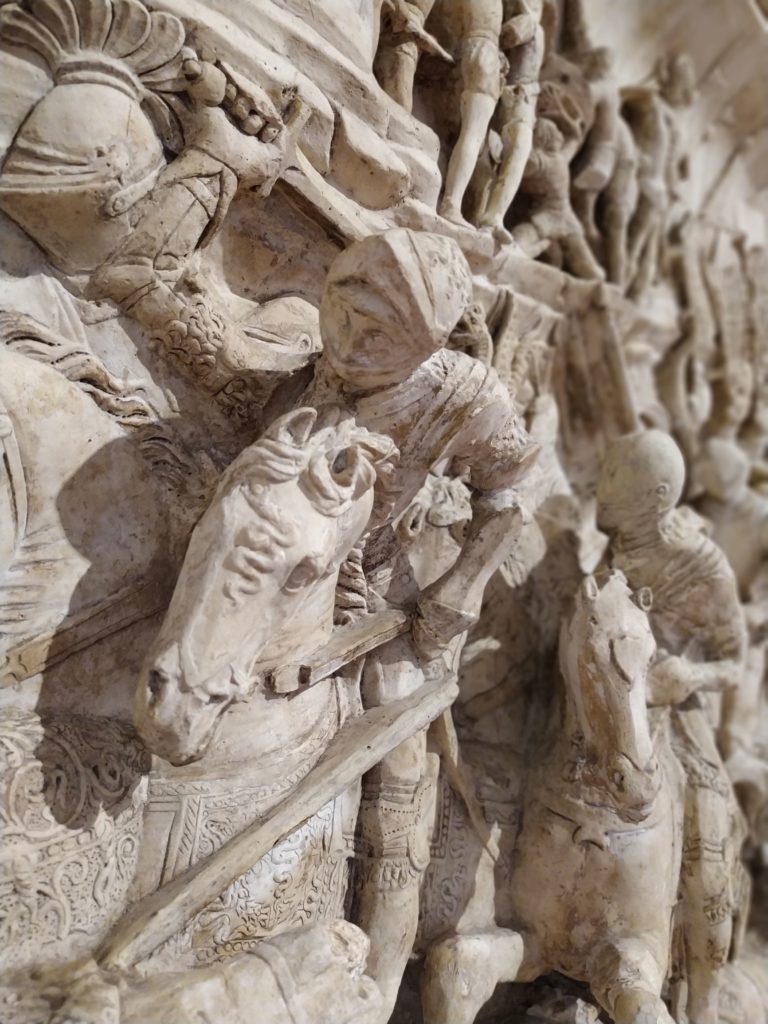
– the students of the academies, who used these plaster casts during drawing exercises, as already mentioned;
– the visitors who could thus directly observe the precious details of the decorations of the Certosa, which would otherwise have been too far away and hardly visible;
– the scholars who study the conservation of the monument thanks to the known date of realization of the casts and allow them to make comparisons with the current state of the originals, exposed to the elements.
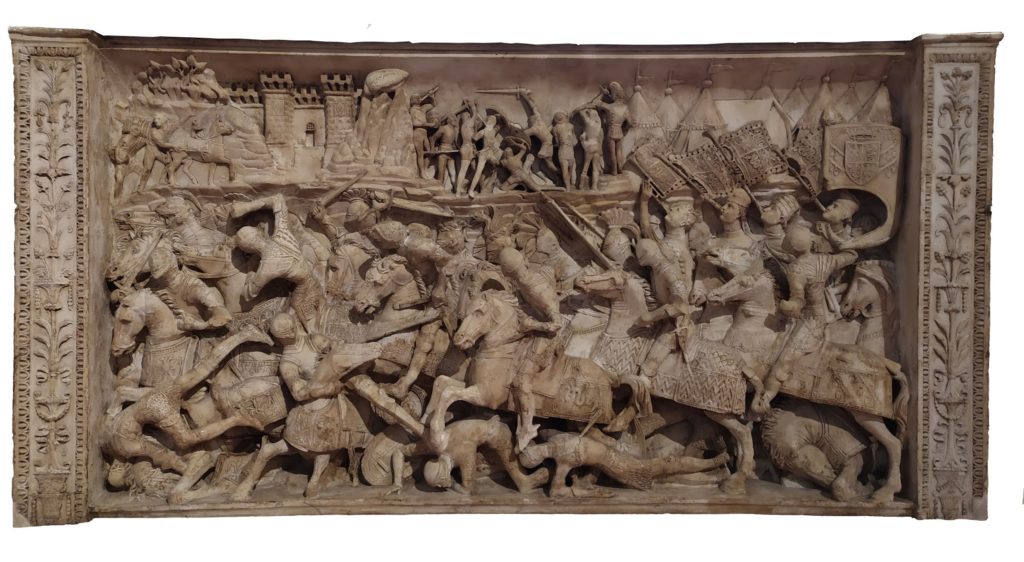
It is clear, therefore, that the casts are not simple copies, even if the importance attributed to them is too often not equal to their value and even if today thanks to technological developments it is no longer necessary to physically create plaster casts, those that are arrived to us are a freeze frame in the history of the monument and a fundamental tool for the transmission of the past.
The next time we will pass in front of that door, asking ourselves what it is hidden behind the wooden shutters we will know that what we will find will tell us much more than what we can only see. The works will narrate the story of the artists and patrons who have lived in those spaces for centuries, the plaster casts will narrate of the men and women who took care of the monument. The history of the museum will also be told, how it was born and how it evolves over time, its rooms and the importance of the link with the context in which it is located, the Certosa di Pavia.
XXXXXXXXXXXXXXXXX